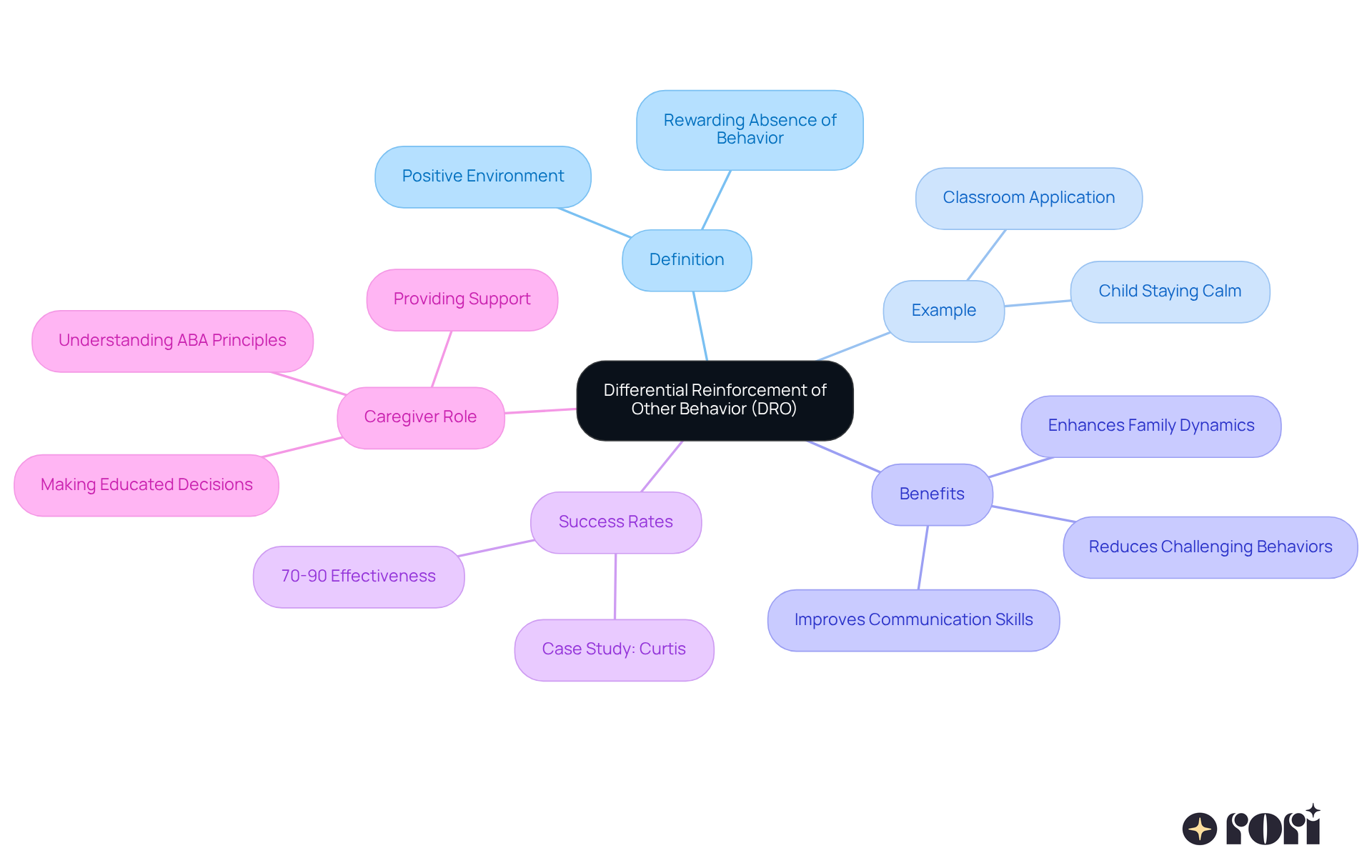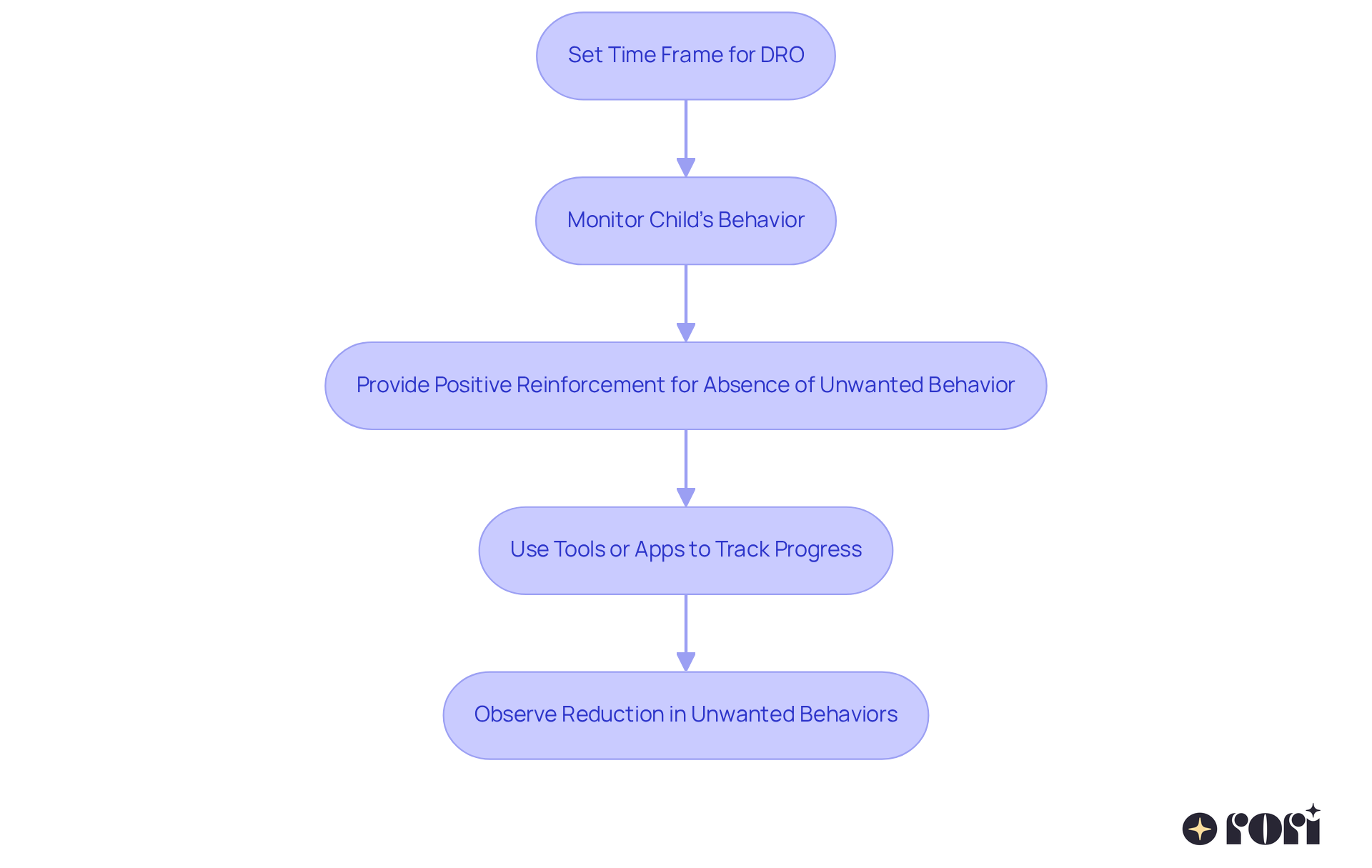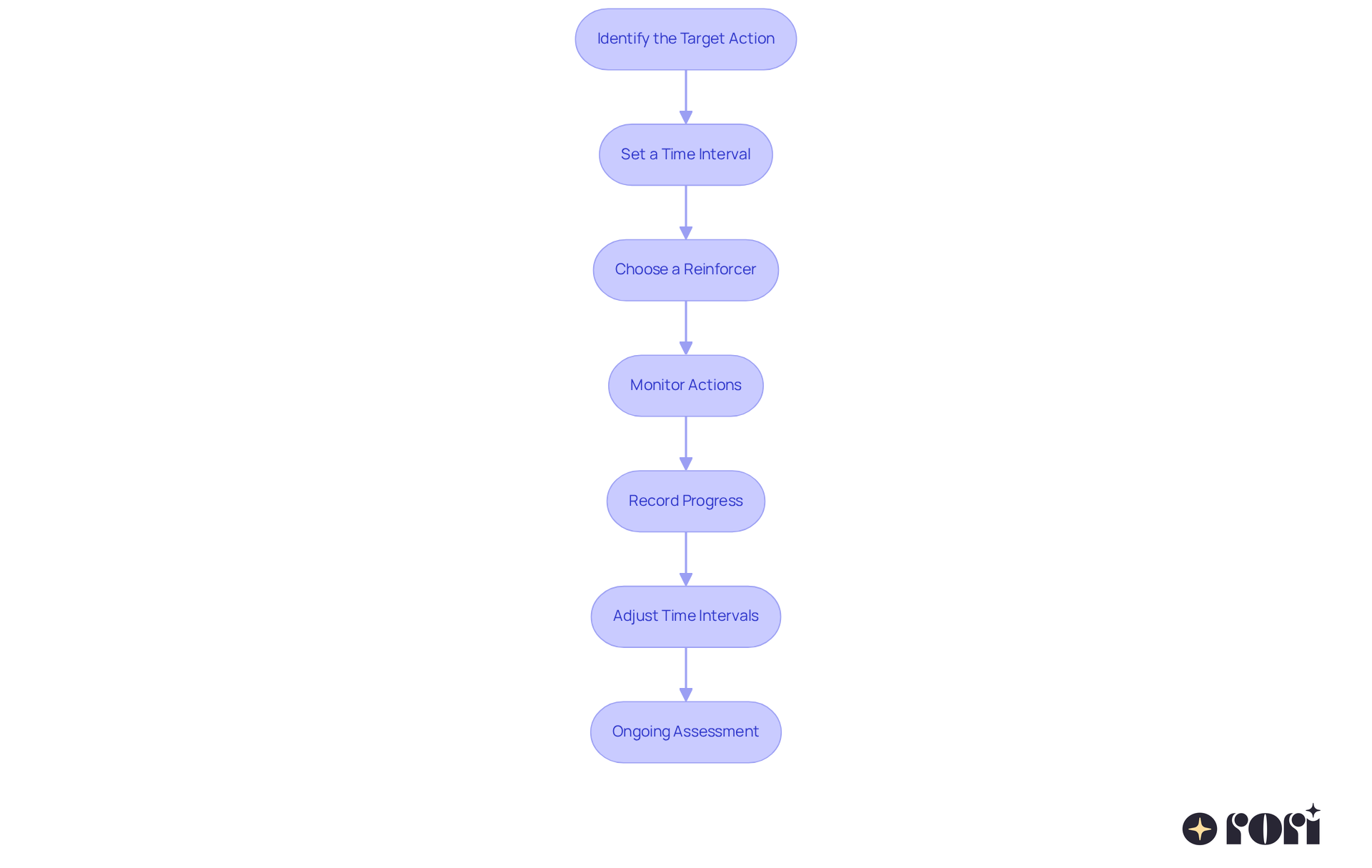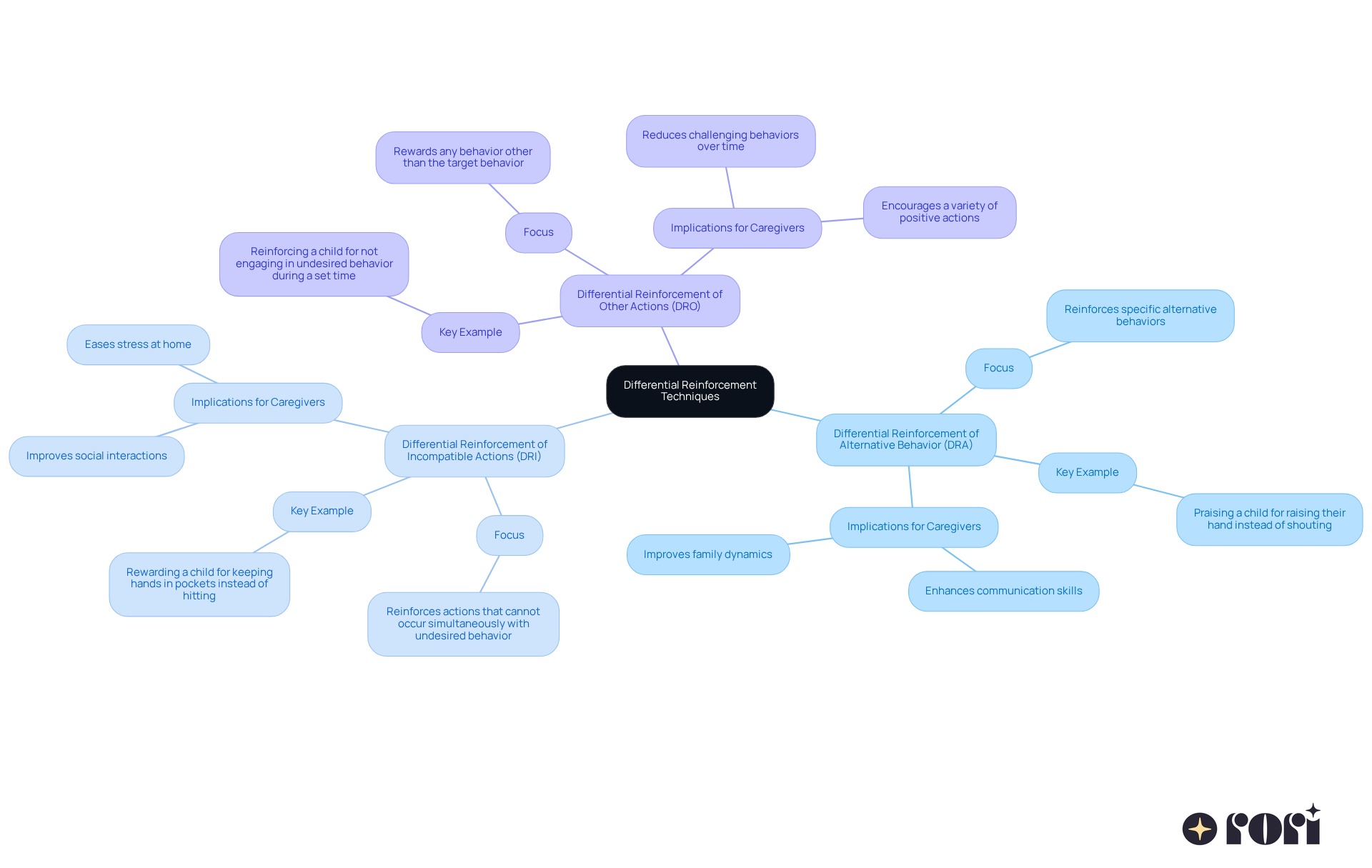The article "Master DRO Behavior Analysis: A Parent's Step-by-Step Guide" is all about helping parents understand and implement Differential Reinforcement of Other behavior (DRO) to tackle their children's challenging behaviors. It walks you through the DRO process, highlighting how effective it can be in reducing unwanted behaviors through positive reinforcement. Plus, it offers a step-by-step guide that empowers you to take an active role in your child's behavioral development.
We know parenting can be tough, and that's why this guide is here for you! It’s designed to make the DRO process feel approachable and manageable. By breaking it down into practical steps, you can feel more confident in addressing those tricky behaviors. Let’s explore this together and see how you can make a positive impact on your child's growth!
Understanding the intricacies of child behavior can often feel like navigating a maze without a map. But don't worry—Differential Reinforcement of Other Behavior (DRO) shines a light on the path for parents eager to encourage positive changes in their children's actions. This powerful technique not only helps reduce unwanted behaviors but also creates a nurturing environment for personal growth and open communication.
So, how can caregivers effectively implement this strategy to ensure lasting results? Exploring the nuances of DRO might just hold the key to transforming challenges into wonderful opportunities for development and connection. Let’s explore this together!
Differential Reinforcement of Other Actions (DRO) behavior analysis is a key technique in Applied Behavior Analysis (ABA) that focuses on rewarding the absence of a specific unwanted action over a set period. Instead of tackling the challenging behaviors head-on, DRO encourages positive activities by providing rewards for any other actions that occur during that time. For example, if a little one tends to throw tantrums, a parent might use DRO by giving praise or a small reward for every 10 minutes the child stays calm. This approach effectively reinforces calmness, creating a more positive environment.
Recent studies show that when applied effectively, DRO can achieve success rates of 70-90% in reducing difficult behaviors. One inspiring case involved a young person named Curtis, who completely stopped aggressive behaviors after just five sessions of unsignaled DRO. This highlights how powerful DRO can be in fostering significant behavioral changes in children with autism.
Moreover, research indicates that kids who receive DRO reinforcement often develop better communication skills and display fewer disruptive behaviors over time. By focusing on rewarding the absence of unwanted actions, DRO not only encourages positive behaviors but also nurtures a supportive environment that promotes personal growth.
It's essential for caregivers to have a solid understanding of ABA principles and strategies to effectively implement DRO behavior analysis. When caregivers are well-informed about these techniques, they can provide better support, make educated decisions, and for their children. As one expert pointed out, 'By understanding and implementing DRO behavior analysis, caregivers and educators can truly enhance the behavioral outcomes for those they support.' This active involvement not only boosts behavioral results but also strengthens family dynamics, reducing stress and creating a more supportive atmosphere for children.
Let’s explore this together! Understanding DRO can be a game-changer for families, and we’re here to help you every step of the way!

Differential Reinforcement of Other actions (DRO) behavior analysis is all about promoting positive responses—it's a key principle in Applied Behavior Analysis (ABA). When parents use DRO, they set a specific time frame to encourage the absence of unwanted behaviors. For instance, if a child manages to avoid troublesome actions during this time, they get positive feedback, like praise, tokens, or small rewards. This approach not only helps reduce those pesky behaviors but also creates a more positive atmosphere by encouraging alternative, constructive practices.
Research shows that consistently encouraging kids for not displaying unwanted actions can lead to a noticeable decrease in those behaviors over time. Imagine a young person earning a sticker for every five minutes they stay calm and don’t interrupt during a family meal. This method effectively shifts focus from negative actions to the positive reinforcement of desired behaviors, enriching the child's overall behavioral toolkit.
With recent , including technology integration, DRO behavior analysis strategies have become even more effective. Tools like mobile apps can help parents track intervals and encourage positive actions in real-time, making the process engaging for both the child and the parent. Plus, understanding each child's unique preferences and cultural background is essential in crafting effective reinforcement plans, ensuring that the strategies resonate with their motivations.
In summary, DRO behavior analysis is a powerful tool for modifying behaviors, nurturing a positive learning environment while systematically reducing unwanted conduct. By focusing on reinforcing the absence of problematic actions, parents can create a more harmonious atmosphere that encourages growth and development. Let’s explore this together and see how we can make a difference!

By actively participating in this process, parents can significantly improve their child’s behavioral outcomes and create a nurturing environment for growth. Let’s explore this together!

DRO is one of several differential reinforcement techniques used in ABA, each with its own unique focus. Let’s take a closer look at these methods!
Recognizing these differences helps parents select the most suitable method based on their child’s unique needs and the specific behaviors in question. Recent research indicates that function-based differential support strategies, including DRA, DRI, and DRO behavior analysis, have resulted in meaningful reductions in disruptive behaviors among youth, especially when combined with pre-teaching. This approach has shown to lower problem behaviors more effectively than differential support alone. A thorough assessment of the child’s behavior is crucial for choosing the right differential reinforcement strategy, ensuring that the approach is tailored to their individual circumstances.
Let’s explore this together! We’re here to help you every step of the way!

Differential Reinforcement of Other Behavior (DRO) is truly a game-changer in Applied Behavior Analysis (ABA). It focuses on rewarding positive behaviors by recognizing and reinforcing the absence of unwanted actions. This not only helps reduce challenging behaviors but also creates a nurturing environment where growth and development can thrive. By using DRO, parents can shift their focus from negative behaviors to encouraging positive interactions, leading to a more harmonious family dynamic.
Throughout this article, we’ve explored the ins and outs of DRO, including:
Research shows that DRO is effective, particularly for children with autism, with significant success in reducing disruptive behaviors. Plus, incorporating technology to monitor behaviors can make this strategy even more effective.
Bringing DRO into daily routines can really change the game for families facing behavioral challenges. By understanding and applying these techniques, caregivers can enhance behavioral outcomes and strengthen their relationships with their children. Empowering yourself through education and active participation in behavioral management sets the stage for a supportive and nurturing environment. Embracing this approach can lead to lasting positive changes, making a real difference in the lives of both children and their families. Let’s explore this together!
What is Differential Reinforcement of Other Behavior (DRO)?
Differential Reinforcement of Other Behavior (DRO) is a technique in Applied Behavior Analysis (ABA) that rewards the absence of a specific unwanted action over a set period, encouraging positive behaviors instead of directly addressing challenging behaviors.
How does DRO work in practice?
In practice, DRO involves rewarding an individual for any other actions that occur during a specified time frame. For example, a parent might give praise or a small reward for every 10 minutes a child remains calm instead of throwing a tantrum.
What are the success rates of DRO in reducing difficult behaviors?
Recent studies show that when applied effectively, DRO can achieve success rates of 70-90% in reducing difficult behaviors.
Can you provide an example of DRO's effectiveness?
An example of DRO's effectiveness is a case involving a young person named Curtis, who completely stopped aggressive behaviors after just five sessions of unsignaled DRO.
What additional benefits does DRO provide beyond reducing unwanted behaviors?
Research indicates that children who receive DRO reinforcement often develop better communication skills and display fewer disruptive behaviors over time, promoting personal growth in a supportive environment.
Why is it important for caregivers to understand ABA principles and DRO?
It is essential for caregivers to understand ABA principles and strategies to effectively implement DRO, as this knowledge enables them to provide better support, make informed decisions, and improve behavioral outcomes for their children.
How does implementing DRO affect family dynamics?
Implementing DRO can strengthen family dynamics by reducing stress and creating a more supportive atmosphere for children, ultimately enhancing behavioral outcomes for those being supported.